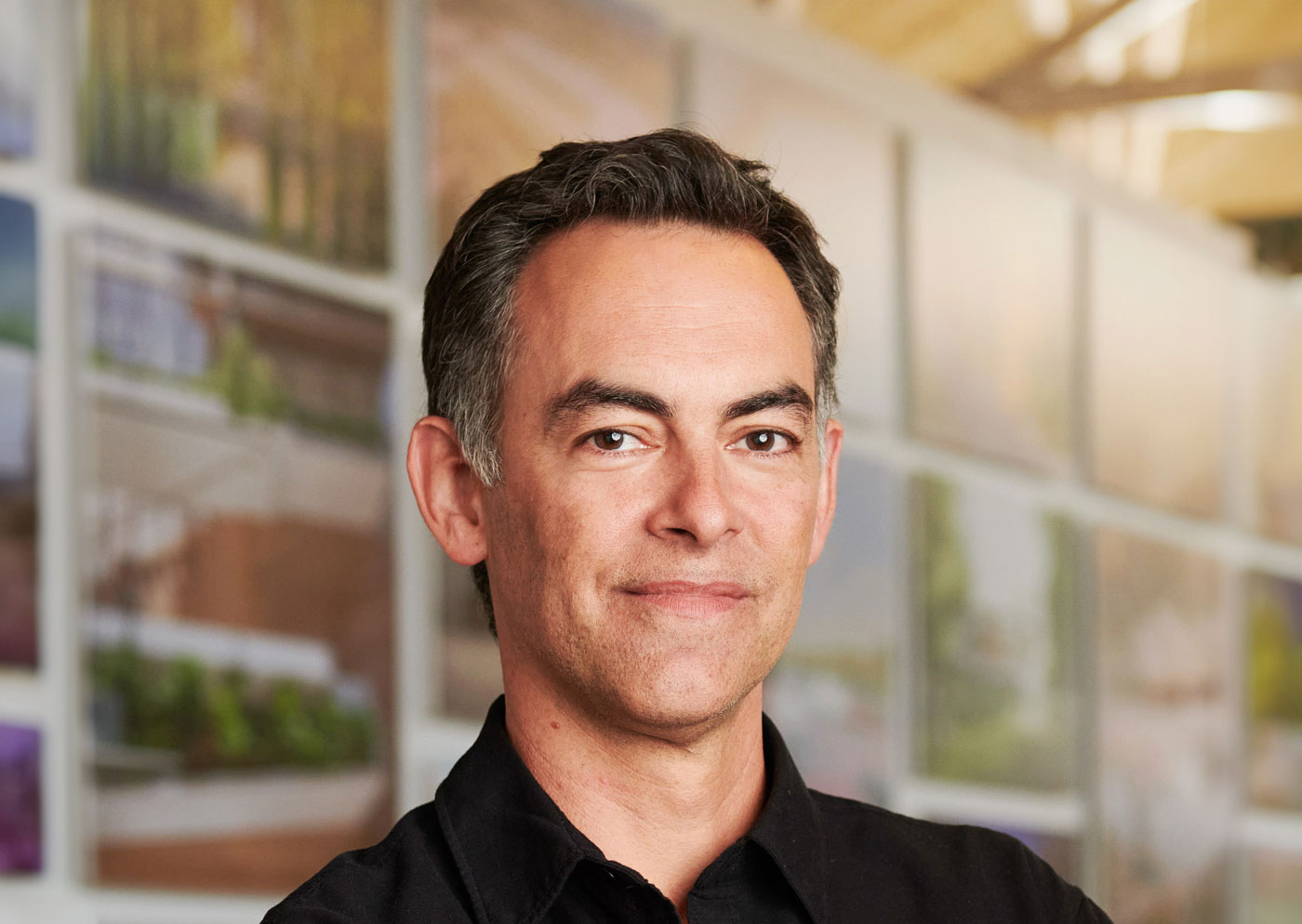Sebastian Salvadó explains why Los Angeles-based RIOS has opened a London office and describes the practice’s research-based multi-disciplinary approach to projects.
What brings you to BCO Conference?
RIOS is a global design collective, and we opened our London office in 2022. We are actively in pursuit of wonder with the design of the built environment and are interested in bringing our unique design process and approach to how we design places for people to the UK and Europe. For nearly 40 years we have been pioneers of multi-disciplinary design. The DNA of our practice is in the view of design as a continuum through the integration of landscape, architecture, and interiors. We hold the view that the most engaging, richly layered, robust designs come from a multi-disciplinary approach. So, while we may be designing the building, we harness the thinking of our landscape practice. Similarly, on a landscape project we may leverage expertise from our interior design studios. We are excited about finding the right partners throughout the UK and Europe and attending BCO is a valuable platform to highlight our portfolio of workplace design projects and meet like-minded and curious people who are our ideal clients.
Can you give any examples of projects where you’ve taken this approach?
A great example of a multi-disciplinary approach to a project is in Houston, Texas. It started as an existing underutilized plaza, known locally as a ‘concrete heat island’ that was not functional or useful to the community. It was built over an existing subterranean carpark, elevated 10 feet above the street with a design that did not connect to the surrounding city and cultural institutions. We were awarded the project through an invited international competition based on our approach to engaging the adjacent cultural institutions with the ability to program outdoor green space that was lacking in downtown. RIOS led the master planning, architecture, landscape architecture, custom furniture design, experience design and branded identify. The park opened last fall and has been well received by residents and visitors alike.
Another great example is in Los Angeles. We designed their LA headquarters as a three-storey interior landscape as a home for their ground-breaking approach to cancer research which is, in itself, is all about interdisciplinarity. They needed a design to match their vision, which was very forward-looking and progressive. The design reinforces their goal to inspire hope and encourage collaboration between all the different parties involved in cancer research – scientists, funders, researchers, even to some degree the public – rather than putting them in their traditional siloes. It was about creating one space where everyone felt invited and included. We created a research environment that is interwoven with natural materials, daylight, and plants. The feedback we have had is that people are working all day long but still feeling incredibly energised and refreshed because they feel as though they have spent the day outside.
One final example is , which was an interiors project for an app-based technology client focussed on online prescriptions. The company was making the transition from a scattered start-up to a headquarters building in a former factory in Santa Monica. We used master planning and town planning techniques to deliver an office that amplifies the sense of Community. Focusing on the mission-driven experience of the company, we established working neighbourhoods that give people a sense of belonging and by stitching together ever-changing spaces for people to move in throughout the day, complete with lush plantings that bring the outdoors in.
Lynn Wyatt Square for the Performing Arts. Photograph by Pavel Bendov/ArchExplorer.
What prompted RIOS to come to open a London office?
We were intent about where we opened offices, and London is key to our strategy because it is home to many forward-thinking clients as part of the global capital market. We now have international offices in Singapore and Shanghai and are doing work across the globe from the US, Mexico, India, Thailand and beyond. Our international teams have bolstered our ability to expand our design thinking and execution. For instance, Paul Westwood, who is a Design Director leading our London office, came from Thomas Heatherwick and is an incredibly talented designer. We like working in diverse locales and collaborating with the best clients who are forward-looking socially and in terms of sustainability, and adventurous in their ambitions – we think London is absolutely the place to find those people.
What’s your role at RIOS?
I trained as an architect, but practice as a multi-disciplinary design lead. As a Creative Director, my role is not to focus on a single discipline but to orchestrate all the disciplines in concert. I’ve been at RIOS for 20 years and have been a partner for seven years.
Are you recruiting architects in the UK? And if so who are you looking for?
We’re always on the lookout for talent. We are looking for individuals who have diverse experiences and backgrounds. Specialists do have a place at RIOS, but we look for individuals who are able to operate fluidly between disciplines, and not just focus on one. It is a rare talent. It takes mentorship and a commitment to collaboration and exploration.
Good Rx Headquarters. Photograph by Jaspar Sanidad.
Can you say a bit more about your design approach?
The reason we are sought after for our design, particularly for placemaking and master planning but also when we are designing second or third homes for clients who want to live in diverse parts of the world, is that we create immersive experiences and inspiring designs. We have a unique approach to the design process; we start with robust research which allows us to extract the essence of a community and a place. We want to understand the cultural and natural origins of the place. We begin with broad research, so for instance we might start by looking at the geological composition of the British Isles when we are looking at a project in Birmingham. Then we will go in deeper and deeper as we home in on a particular community and site. We will really get to know its history and to understand the present context as well. We are all armchair anthropologists. We work to understand the historic origins of the current demographics.
Can you give a specific example?
We are working on a notable project in one of the largest cities in the U.S. where we are designing an entire neighbourhood. For this project, we collaborated with a consultant early on to do an in-depth analysis of the cultural history and fabric of the area up until present day, and that informed the way we approached the master plan. It’s an authentic way of integrating public space that allows you to stitch together the different communities that live there, or that have been displaced and integrate those details into the fabric of the design. We’ll look at the nuances of the physical manifestation of the current community. It’s a muscle or a skill you develop over time as you do it again and again.
Ellison Institute of Technology. Photograph by Art Gray.

